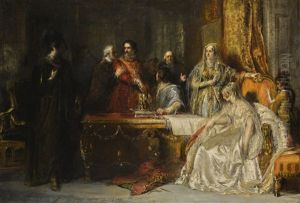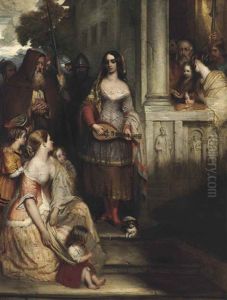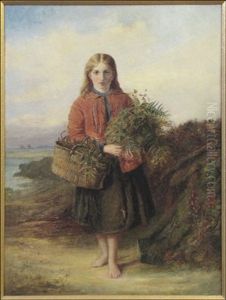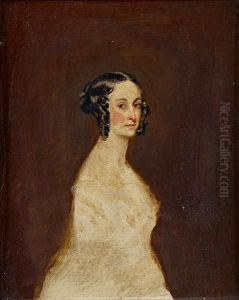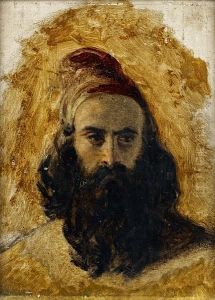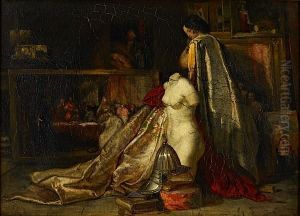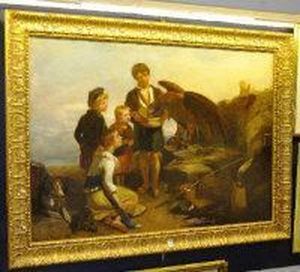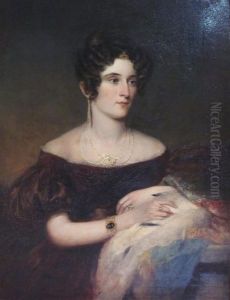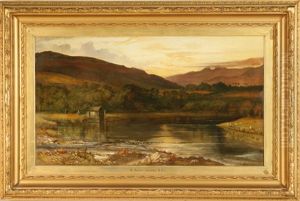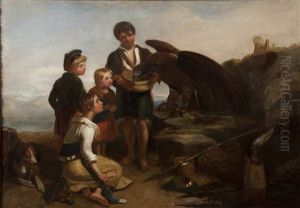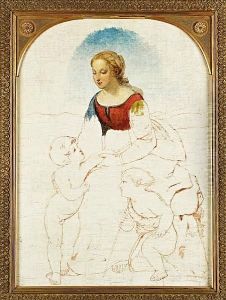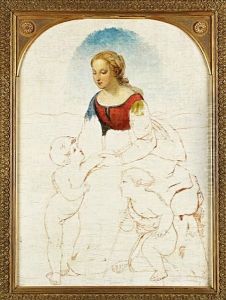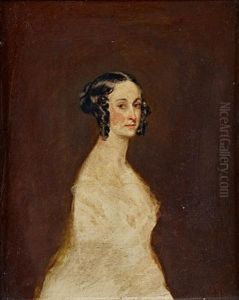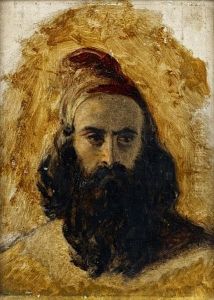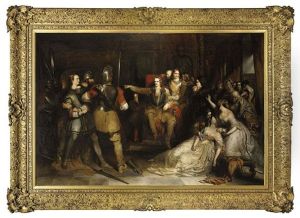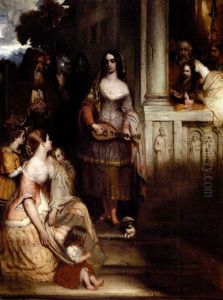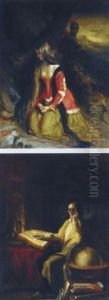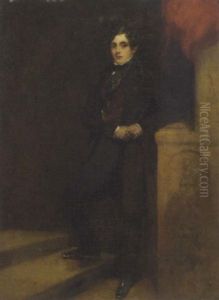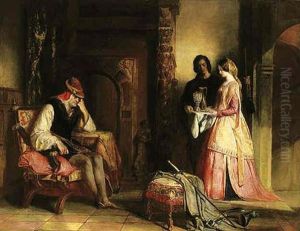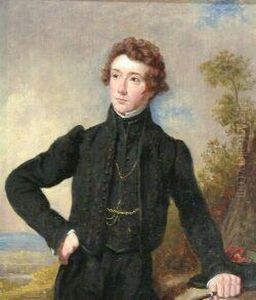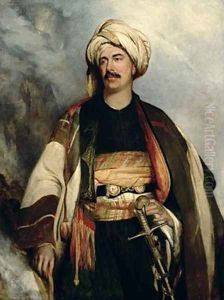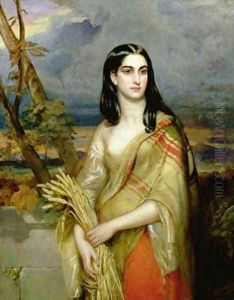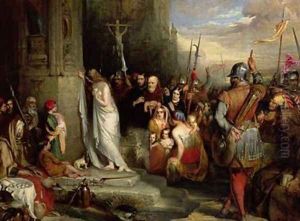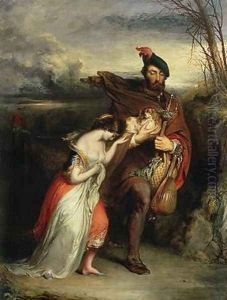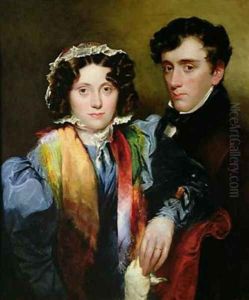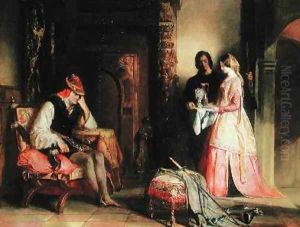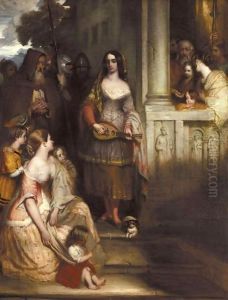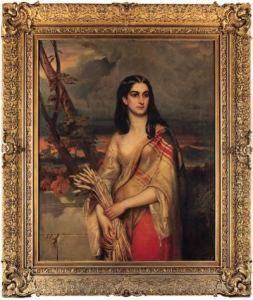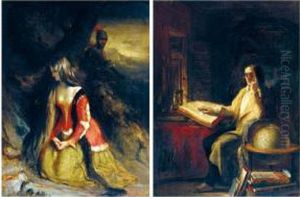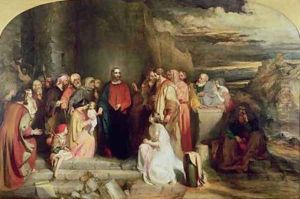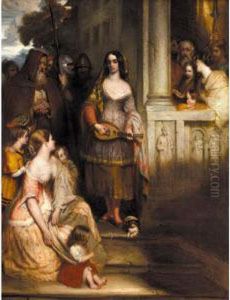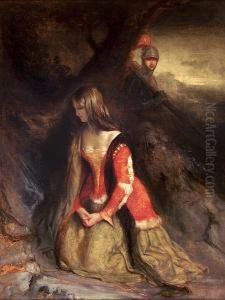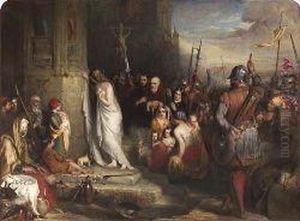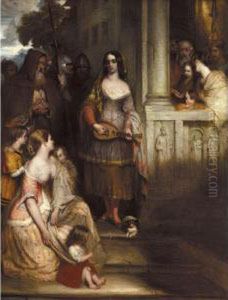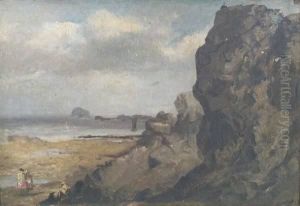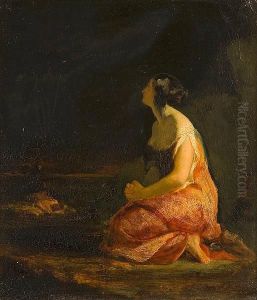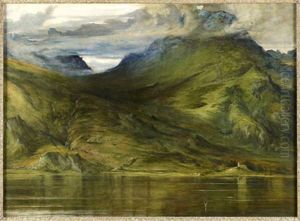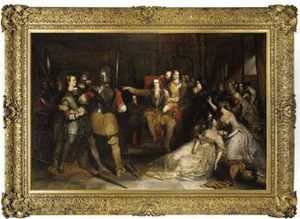Robert Scott Lauder Paintings
Robert Scott Lauder was a Scottish artist known for his portraits and historical paintings. Born on June 25, 1803, in Silvermills, Edinburgh, he was the son of John Lauder and Helen Tait. Lauder's initial education was at the Edinburgh High School, followed by training at the Trustees’ Academy under Sir William Allan. He was a contemporary of artists such as Sir William Allan and Sir Joseph Noel Paton, with whom he shared a passion for art that depicted historical and mythical subjects.
Lauder traveled to London in 1825, where he studied the Old Masters at the British Museum and the National Gallery. He then moved to Rome in 1833, where he became influenced by the work of Italian Renaissance painters, particularly Raphael. During his time in Italy, Lauder also befriended fellow Scottish painter David Roberts, and the two would often paint together.
Upon his return to Edinburgh in 1838, Lauder became a leading figure in the Scottish art scene. He was one of the founders of the Royal Scottish Academy (RSA) and was elected as an Academician in 1830. Through his teaching and his own work, Lauder played a significant role in the development of the Scottish school of painting. He was particularly noted for his use of color and his ability to capture the human form with a dramatic and expressive realism.
Among Lauder's most famous works are 'The Trial of Effie Deans', which is based on Sir Walter Scott's novel 'The Heart of Midlothian', and 'Christ Teaching Humility'. He was a prolific portraitist, painting several notable figures of his time, including Sir Walter Scott himself.
Lauder's influence extended beyond his paintings. He was a respected teacher and served as the director of the Trustees’ Academy in Edinburgh, where he trained a generation of Scottish artists, including William McTaggart and George Paul Chalmers.
Robert Scott Lauder died on April 21, 1869, in Edinburgh. His legacy is preserved in the collections of major galleries, including the National Galleries of Scotland, where his contributions to Scottish art history remain celebrated.
